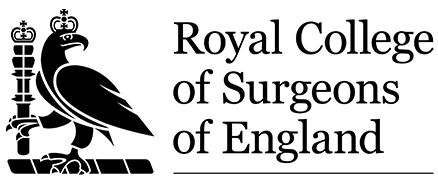What’s the difference?

Often confused with hair loss; maturing hairlines can be a concern for many men. But a changing hairline is not necessarily indicative of hair loss. Over their lifetime a man’s hairline very rarely remains in the same position (only around 5% of males retain a juvenile hairline their entire lives) and although this can be worrying for a lot of men it doesn’t always mean it’s time to fear the worst.
A maturing hairline
A maturing hairline may show similarities to male pattern baldness with the difference being the receding will reach a point where it stops. This stop may not always appear regular and irregularities can occur. These can include the Widow’s Peak which is where the hairline takes a more defined M shaped line as a result of the hairline receding further on the sides leaving a larger area of hair more centrally on the forehead. It is debated whether a widow’s peak is even a sign of a maturing hairline or simply a hairline in its own respect. An indicator of male pattern hair loss is when the hairline has receded by more than 1.5cm and the temples have significant recession.

Inevitably most men experience some form of a maturing hairline or changes in the shape of the hairline. A number of women also experience this but female treatment options are more limited. For men, signs of a changing hairline can begin as early as the age of 17 and the change from a juvenile hairline to a mature hairline is simply a natural sign of ageing and shouldn’t be feared. It should be made clear that this process isn’t a sign of balding.
Why does this happen?
A maturing hairline comes down to hormonal changes within the body. It’s theorised that the Dihydrotestosterone hormone (DHT) is very closely connected to the process of maturing hairlines. This hormone causes a reduction in hair follicles which is why it’s suspected as being a cause for maturing hairlines.
Hair loss and male pattern baldness
There are certainly some signs to look out for when it comes to hair loss. A maturing hairline may not mean someone is experiencing hair loss however this coupled with thinning hair on top of the head could be a clear sign of is balding. Hair thinning on the top of the head is a gradual process and is usually noticed fairly quickly, even years before baldness. Thinning on the crown and temples is also another possible sign of hair loss. Some men get a singular bald spot and others see their hairlines recede to an M shape which may then continue to recede until the hair is almost completely gone.
 Male pattern baldness (MPB) is when the growth cycle of the hair begins to slow down resulting in shrinking hair follicles. This then produces shorter, finer strands of hair until eventually there is no hair growth cycle at all and the hair ceases to grow all together. Genetics play a major role when it comes to MPB. Men who have relatives with MPB are much more likely to experience it themselves.
Male pattern baldness (MPB) is when the growth cycle of the hair begins to slow down resulting in shrinking hair follicles. This then produces shorter, finer strands of hair until eventually there is no hair growth cycle at all and the hair ceases to grow all together. Genetics play a major role when it comes to MPB. Men who have relatives with MPB are much more likely to experience it themselves.
Hair loss is usually a natural part of the aging process and nothing to worry about, however in some cases the hair loss is a sign of a more serious medical condition.
Hair loss prevention
There is no sure way of preventing hair loss. However, it is well documented that stress can contribute to hair loss, but lifestyle changes such as being more relaxed and doing whatever possible to limit stressful situations could definitely be a benefit.
When does hair loss start?
Males commonly begin to experience a maturing hairline from the age of 17 and most men won’t keep the hairline they had when younger. The hairline will move back roughly half an inch to one inch from where it was originally. It’s nothing to be concerned about as it’s a completely natural occurrence for the majority of men. Hair loss is slightly different and some men who go through hair loss can expect to see the signs before the age of 21, around 25% of males with hereditary male pattern baldness will notice minor changes this around this age.
Treatment for hair loss
A hair transplant is the most popular treatment for hair loss. Hair transplants work by removing hair from the scalp’s permanent zone, this is then transplanted to the thinning or balding areas of the scalp. It’s not uncommon for multiple treatments to be necessary. This procedure produces the most natural look as well as being permanent.
Other options include prescription medication, topical treatments and derma rolling.
In conclusion
There isn’t always a clear way to define when someone’s hairline may be maturing or if they are experiencing hair loss. Here are some bullet point notes to consider if you think you may be experiencing either a maturing hairline or hair loss.
- A mature hairline isn’t always a sign of male pattern baldness
- Male pattern baldness displays signs of hair loss for instance a thinning crown
- Male pattern baldness occurs due to shrinking hair follicles
- Maturing hairlines can begin in the teenage years
- Male pattern baldness is usually linked to genetics
- A mature hairline rarely exceeds past the anterior borders of the ears
Written by: Lewis Mahoney



